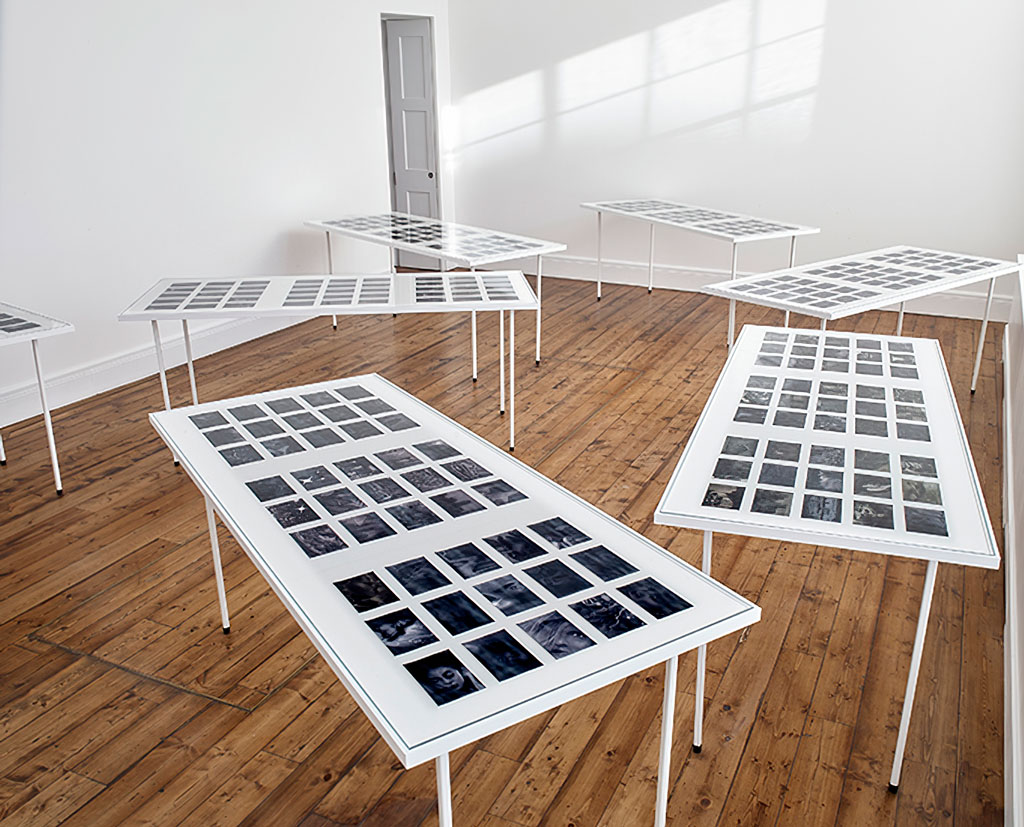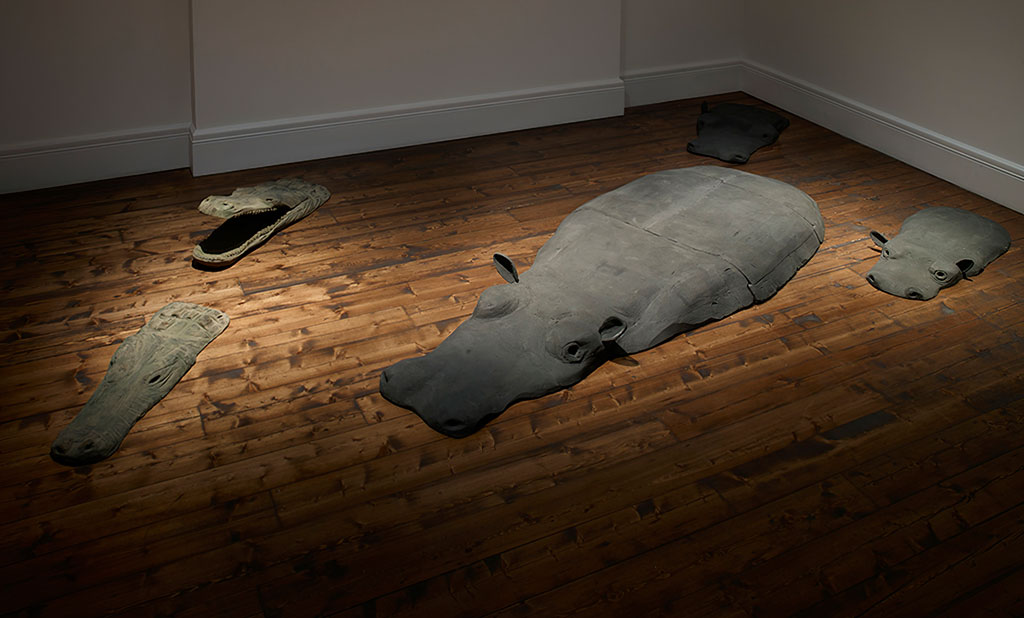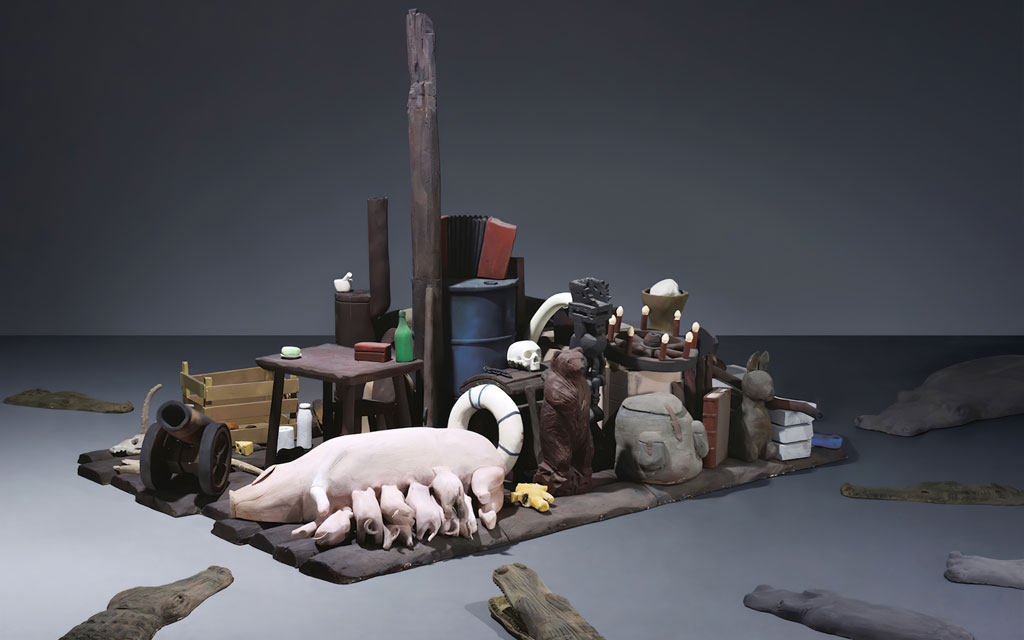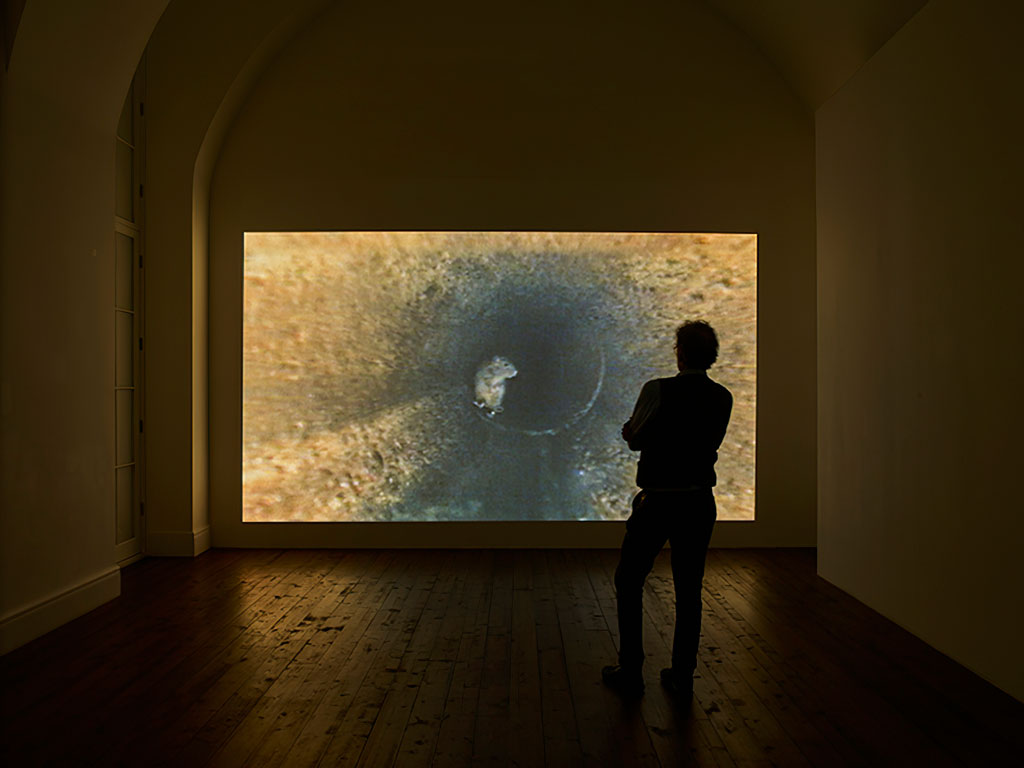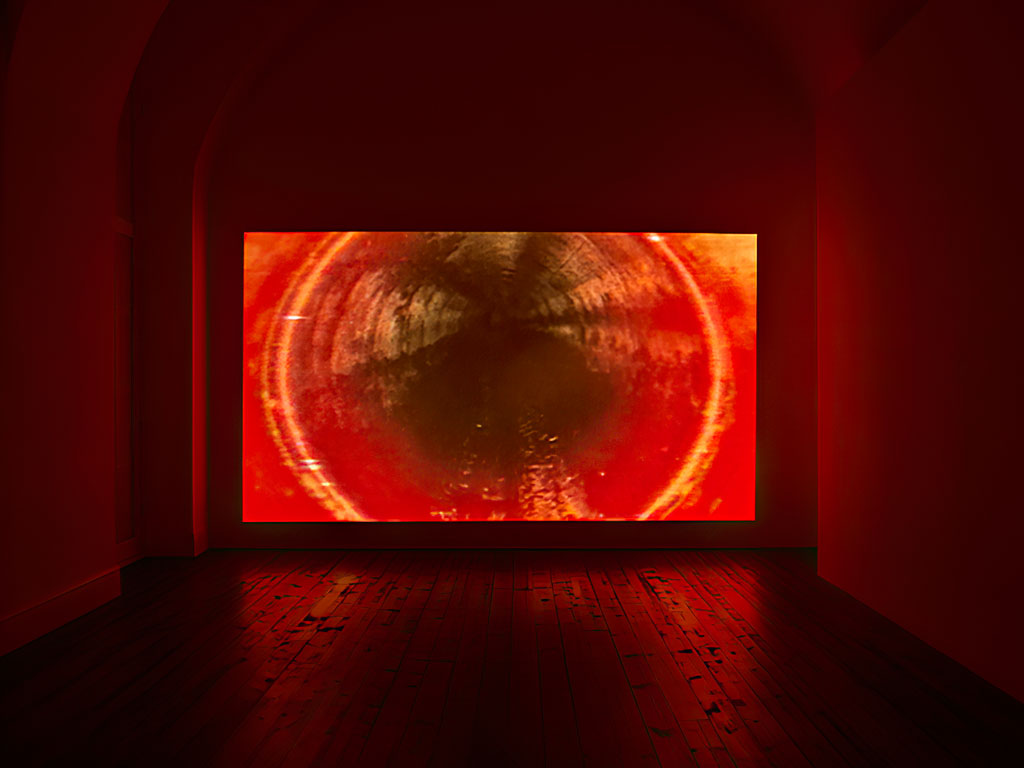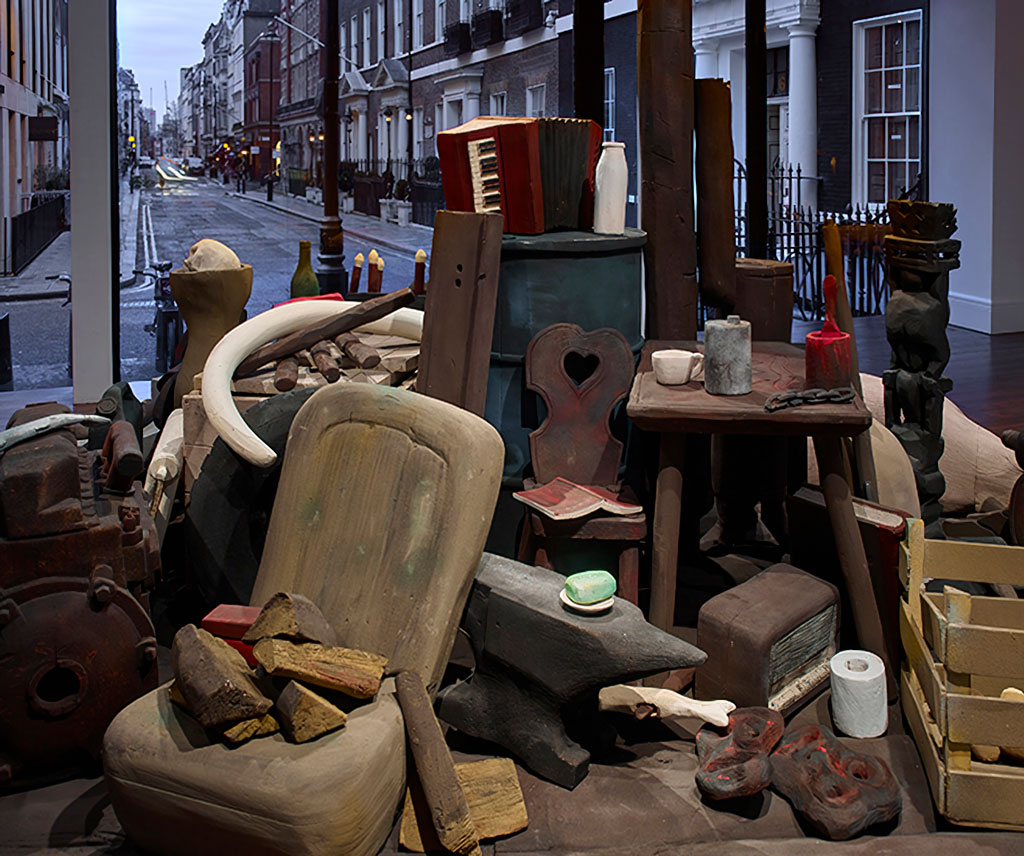ART-PRESENTATION: Peter Fischli & David Weiss
 Since 1979 Peter Fischli and David Weiss have been collaborating on a body of work that combines, rearranges, or otherwise manipulates their daily experiences into something new and unexpected. Executed in a variety of media, including unfired clay, polyurethane, photography, and video, their work playfully ignores the distinction between high and low art.
Since 1979 Peter Fischli and David Weiss have been collaborating on a body of work that combines, rearranges, or otherwise manipulates their daily experiences into something new and unexpected. Executed in a variety of media, including unfired clay, polyurethane, photography, and video, their work playfully ignores the distinction between high and low art.
By Dimitris Lempesis
Photo: Sprüth Magers Gallery Archive
Peter Fischli and David Weiss’ exhibition “Should I paint a pirate ship on my car with an armed figure on it holding a decapitated head by the hair?” presents a concise overview of their extraordinary transformations of the commonplace in the form of three seminal works from throughout their collaborative career. At the centre of this exhibition is the large-format sculptural installation “The Raft” (1982-83) made entirely of polyurethane; a material Fischli Weiss first began using for their sculptures in the early 1980s. Polyurethane was originally used mostly in film productions, where it was employed as a component in props and scenery construction. This choice of material situates the installation in the realm of the workshop and labour, a subject the artists explored from the outset of their work together. “The Raft” hasn’t always had its present form. Its predecessor, “Mad Max” (1982), made shortly after the film of the same name was released in 1981, consisted of a number of polyurethane parts mimicking civilisational detritus and various types of rubbish. A gloomy and mundane collection of objects, the original work was realised in a time where science fiction cinema conjured a world of destruction that could also be felt in the real world, thanks to the tense social climate of the Cold War, the threat of nuclear power, and environmental problems. However, it was during the exhibition “Die Sonne bricht sich in den oberen Fenstern” organised by Martin Kippenberger in Cologne in 1982, that “The Raft” took on its current title and present, ultimate form: the installation, which is carved entirely out of polyurethane, consists of a platform of loosely assembled planks upon which a number of mostly banal objects including canisters, barrels, and wooden crates, are piled. Crocodiles and hippos circle around. On view in the gallery’s lower level is “Kanalvideo” (1992), a soundless, 60-minute video of footage from a camera advancing through an empty sewer pipe. Though winding its way through the most trivial of our infrastructures, the route through which waste is disposed, the multi-coloured shots invoke something akin to a hallucinogenic state. The most humdrum aspects of everyday life are transformed into an abstract, contemplative snapshot – a stream of ever-new, mandala-like images with a maelstrom pull. “Kanalvideo” develops this balancing act, between unpretentious simplicity and complex effect, into a poetics of the ordinary. This theme of overstatement of the everyday in all its facets takes bizarre, fantastic shape in the pair’s “Fotografias” (2005), a series of photographs shown as the third work in the exhibition. Exhibited on tables, the 10x15cm black-and-white photographs speak to the oversaturated image culture of our time. In the spirit of Fischli Weiss’ canonical work “Visible World” (1987–2000) and its depiction of the commonplace and omnipresent, “Fotografias” draws on the world of trash culture, quoting the aesthetics of amusement parks and their promotional signage or decorated carousels. The photographs obscure the often stridently colorful, large-format iconography from these amusement industry aesthetics; they employ close-cropped compositions translated into small-format, black-and-white prints in an alienating step that causes once exuberant, wild pictures – images that normally beckon towards enjoying a moment of imaginative fancy – to become mysteriously impenetrable.
Info: Sprüth Magers Gallery, 7A Grafton Street, London, Duration: 17/1-14/3/20, Days & Hours: Tue-Sat 10:00-18:00, http://spruethmagers.com
